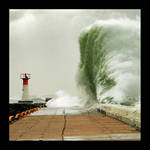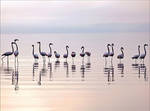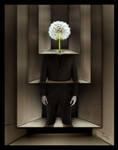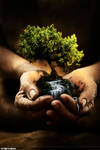ShopDreamUp AI ArtDreamUp
Deviation Actions
Spanish Translation can be found - here
It's been a while since I posted an informative article, this one is specifically for my student LostWithinDreams
Outline
What is a critique?
Pointers to aid in critiques and tips you can apply to your own artworks
Creative ways to enhance a piece
Below I will try to point out tips that you can mention in your critiques which you can also apply to your own artwork to help build on the structure of your critiques and works. It is lengthy; I'll try not to bore you by adding some photos to spice it up. So go grab some popcorn or your favourite snack while you read – if you can multitask of course
Please note that these are my personal tips that I have learnt and picked up during the course of learning, you do not have to follow my format, they are simply guides, most of these tips can be applied to almost any medium of art/literature, and you don't have to include all of it in a critique. I may have made a few errors as well, so please do forgive and correct me on them as these were pulled from my thoughts, except the definitions of course.
What is a critique?
My definition, since others I found are quite vague: A critique is basically a written analysis which is intended to help an artist improve, not just to point out every flaw or every remarkable thing you could find about a specific piece, be it literature or art, but rather say why you think the piece is effective or suggest what you think could be done to improve the piece. The critic should at least have the knowledge and understanding about the medium they are critiquing.
When critiquing...
Look at the category and experience level
Make it a point to check the category the work is placed in, this will allow you to critique according to what the artist considers the piece to fall under. Also check for the artist's experience level, remember that aspiring artists should be critiqued differently than professional artists, they're both on different skill levels.
For artists, be sure you have placed your work in the appropriate gallery for your benefit; seek opinions if you are unsure. Make a note somewhere about your skill level, it can be mentioned somewhere in your artist comment indirectly.
Read the artist's comment
Be sure you have read the artist's comment; it's pointless and embarrassing to address things in your critique while the artist have acknowledged and explained their concept, use of media, difficulty they faced, things they'd wished to fix and you have pointed those things out again.
For artists, if you have requested critiques, be sure to write a description about your artwork including the things I mentioned above, such as your aim, medium(a), difficulties you faced and whether you either arrived at a solution or resolution.
If you took inspiration from another artwork or art movement include it.
Try to be as objective as you can
Take note that every one of use are different, we each share different cultures, we're all different ages, different gender, different preferences and we all think differently. So bare in mind when you give critiques to be as objective as you possibly can when advising (you can always let the artist know how the piece makes you feel), unless it's a conceptual piece and the artist specifically requests your personal opinion (emotional attachment) and thoughts on the piece.
Points to consider in your works and also when you give critiques
Impact
(The power of making a strong, immediate impression) – how do you want the piece to strike your target? As the critic, how does the piece strike you? Has the artist reached their aim – to evoke a response such as fear, anger, relief, happiness, disturbance etc.?


Approach
(The method used in dealing with or accomplishing) – Is the approach an appropriate format for the media, the concept? Could they/you have chosen a different perspective, angle? Is it supposed to be tame, vivid, bland, wild, soft, harsh? If spot colouring was used, is it purposeful?:thumb51313175:


Content
(The substantive or meaningful part) – choice and placement of subject/object within the piece, is it appropriate? Has the position of the elements been set up well? Can it be placed a different way to enhance the effect? Note, do not bring personal issues in to the choice of the subject when critiquing, please do not insult the model or artist, critique the work.

Concept
(The intention to convey a message or a meaning specifically) – How strong, effective and thorough is the message/meaning? How does it relate to the artist's comments? Does the artist's statement and concept connect? :thumb93778141: :thumb114223791:
:thumb93778141: :thumb114223791: Composition
(The combining/relation of distinct parts or elements to form a whole) – Includes balance, content, colours, framing (cropping), use of depth of field, focal point and technical focus, aperture and shutter speed. How are these distributed and utilised? Do they combine together to create a successful piece, is it scattered/off target?
 :thumb121428240:
:thumb121428240:Colour
(if you don't know what colour is you need a


Balance/Equilibrium
(is a state in which opposing tendencies are equal or at least proportionate according to how the eye sees things) - use of colour(s), texture(s), pattern(s), space [positive and negative space/symmetry and asymmetry, room for the eye to travel, rule of thirds], weight [distribution of elements (objects/subjects) within the piece]. The use of balance is heavily influenced by how you also compose your piece along with the use of light and other factors. Without balance the image could either loose all or gain all impact.:thumb119084373:


Some aspects that can be found in works (mainly in abstract and literary works), note that every artwork may either contain a minimum amount or no amount of these. Rhythm (The pattern of development produced in a literary or dramatic work by repetition of elements such as words, phrases, incidents, themes, images, and symbols) Flow (Continuity and smoothness of appearance) and Vibe (energy)

 :thumb89112910:
:thumb89112910:

Lighting
(I'm sure you know what light is right?:thumb108926939:


 :thumb45559125:
:thumb45559125: Presentation
(way in which the work is displayed) – The border around the piece, collages, diptychs and triptychs (photo essay). Is it necessary? Does it distract from the piece? Do the photos in the diptychs/triptychs relate and connect with each other or tell a story? Will one image suffice?





Uses
you can point out some suggestions of what you think the piece could be used for, like a book cover, graphic novel, spread, campaign ad, postcard etc.Creative ways to enhance a piece
Juxtaposition - Adjacent situation; apposition or contact
:thumb98355216: :thumb87752932:
Illusion - Something, such as a fantastic plan or desire, that causes an erroneous belief or perception

:thumb42896253: :thumb63085213:
Trick Art/Photography – play with perspective and foreshortening to give a surreal effect






Originality – Coming up with fresh ideas, thinking differently from the norm
:thumb87860756:
:thumb52962283: :thumb114846573:
Stepping away from cliché
Twisting/swapping what would usually be done to something unexpected
:thumb50778770:
:thumb114133548:
Not being afraid to try, experiment nor make mistakes!
Another informative article I wrote - How to Develop Concepts
Hope you learned a thing or two from that, if you need me to clarify on any points, please do ask
Have a good day all!
Update and Special News!
Hi guys!!
It's been a very long time since I've been active on here. I noticed much has changed in terms of the user experience. Looks cleaner and there's lots of extra stuff.
Hope you guys have been doing great!
I don't know why I became so inactive here, I guess I get like that and go through phases but I will never forget how dA brought me so close to some of my dearest friends that I met here. It really has been an experience for me in building my confidence in art and striving when I felt my work wasn't that good. I took so many photos and uploaded them, and kept trying to make them better by going through so many deviations and wishi
Tagged and Hello!
Hey guys! I hope you are all doing well, it's been quite a while. Hope Ramadhan is going great, of course it is I'm sure.
I'm hardly on dA these days. Been practising loads of typography lately :) If there's any of you still interested in following my work you can follow me along on www.dribbble.com/famz
Ok so I was tagged by `petrova (https://www.deviantart.com/petrova) thought I'd do the tag since she was kind enough to remember me :)
Here are the rules:
1. You must post the rules.
2. Each person must post 5 things about themselves in their journal
3. Answer the questions the tagger set for you in their post, and create eleven new questions for the people you tag to
Official www.junoondesigns.com and Giveaway
With the new year, comes my new site.
Wishing you guys a Happy New Year!!
The Giveaway
Go to my website www.junoondesigns.com
and leave a comment on any of the posts/blog or projects within this week and you have a chance to win 3 of my designs, one of them being a cupcake card. Will chose 2 winners at random, and it's open to anyone!
Be sure to include your email so I can contact you if you do win.
Please share and pass on! :)
:heart: :huggle:
Giveaway!! My 2011
Hey guys!
On January 1st, I will be launching my website www.junoondesigns.com
And I will be doing a GIVEAWAY!
All you have to do is leave a comment on any of the posts on the website when it is launched,
include your email within the week and you have a chance to win 3 of my designs, one of them being a cupcake card.
Two winners will be chosen at random, and it's open to anyone! Please share and pass on!
----------------------------------------------------
So I just thought for a second...in 4 days we'll be seeing next year O.o
I wanna make a blog post about my 2011
Don't know where to start though, since it's full of stuff that ha
© 2009 - 2024 FaMz

